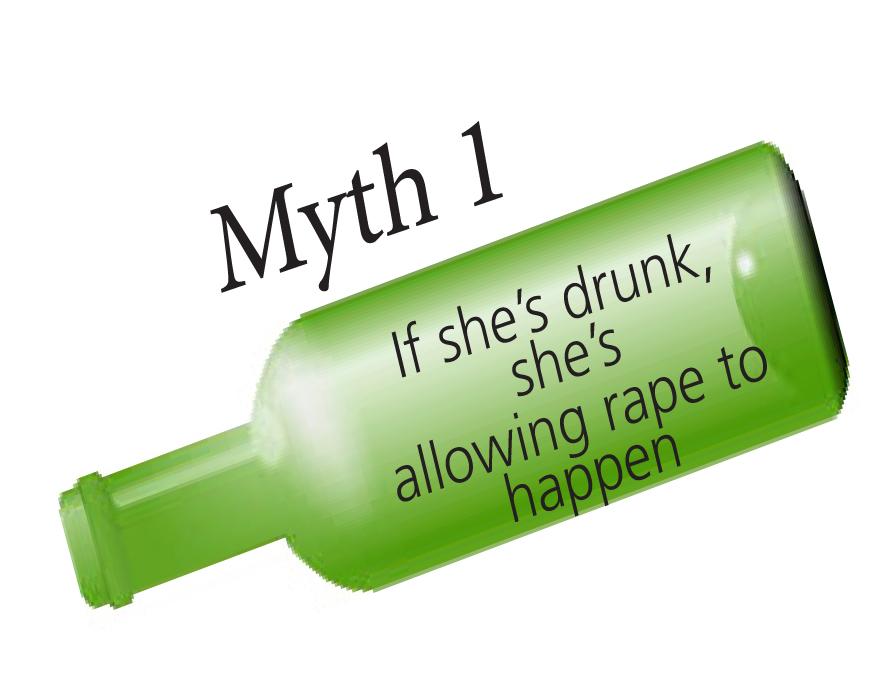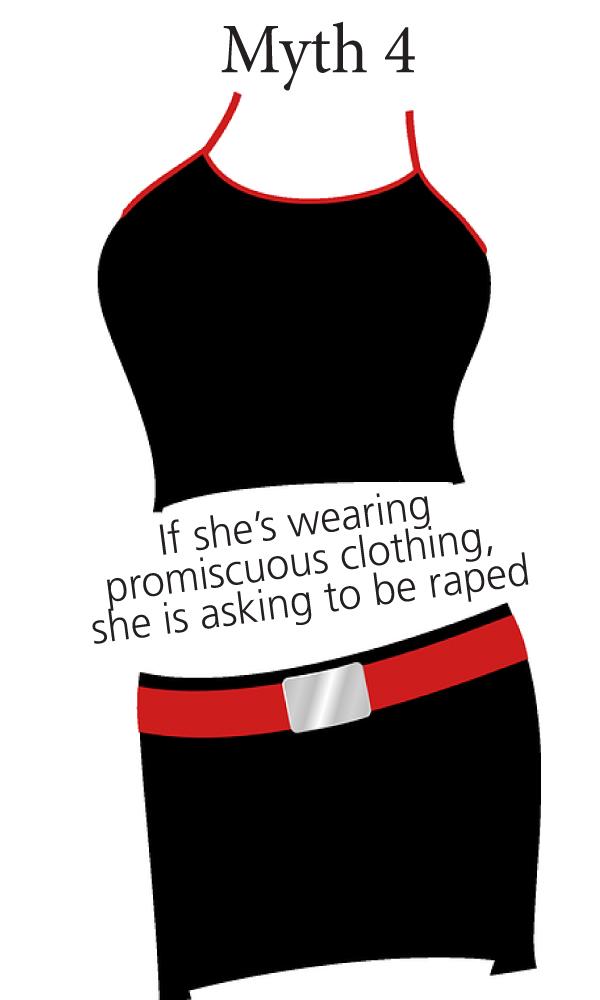Living in a rape culture
This is the first of three Royal Page special features about rape. Here, we call attention to the culture. In our next issue, we will provide the facts and figures of sexual assault, and, finally, we will discuss progressive solutions.
Mar 5, 2015
No advertising company, television show, social media app, sports team, or video game producer sought to foster a culture of rape and sexual assault in their programming.
It exists there, though.
Likewise, the social world of a high school creates an environment in which condoning rape culture is as easy as a scroll of a thumb.
Ms. Katie Eichele is the director of the Aurora Center for Advocacy and Education at the University of Minnesota – Twin Cities (UMN), a program that works to “serve all victims/survivors/concerned people of sexual assault, relationship violence, and stalking at the University of Minnesota and Augsburg College.” In a phone interview with The Royal Page, she explained that young people today are susceptible to a “rape culture.”
 “The way we view rape culture is as a society of attitudes and behaviors that perpetuate the idea that, particularly, women’s bodies are hypersexualized and viewed as less than men’s are,” Eichele said. “Women are viewed as sexual conquests.”
“The way we view rape culture is as a society of attitudes and behaviors that perpetuate the idea that, particularly, women’s bodies are hypersexualized and viewed as less than men’s are,” Eichele said. “Women are viewed as sexual conquests.”
Eichele explained that rape culture validates the perpetrator’s actions and blames the victims.
“What society is doing is excusing men of their inappropriate behavior. That’s the epitome of rape culture; it actually shifts the accountability from those who perpetuate the crime to the victim,” Eichele said.
For HHS students, one example of rape culture is on Twitter. This Sept., some HHS students adopted the hashtag #HDRT, which others eventually came to learn stood for Hopkins Date Rape Team. They began using #HDRT in Instagram and Twitter captions and bios.
When three students who tweeted and posted the hashtag were questioned by The Royal Page, two of them claimed it did not stand for HDRT, but when asked to explain what it did stand for, they did not provide an alternative.
One, however, admitted that it did indeed mean Hopkins Date Rape Team, but said “we don’t act on it, though.”
Others who “liked,” “favorited,” or commented on the posts confirmed the hashtag’s meaning.
While the tweets and Instagram posts were “favorited” and “liked” by as many as 150 people, certainly not all knew the true meaning.
The hashtag was nothing more than a joke. Still, an HHS student who had liked multiple posts containing the hashtag on Instagram, who wished to remain anonymous for this story, was ashamed upon realizing the true meaning.
“At first I thought it must have been an inside joke, but date rape could never be funny. I was embarrassed to have associated myself with [the hashtag],” the student said.
Ms. Kirsten Slinde, Health Sciences, questioned why the HHS community allowed HDRT to exist.
“Do people call [those students] out on it? Do they say that this is not okay?” Slinde said.
Ms. Patty Johnson, Principal, asserted that beyond sexual violence, students must be wary of their online footprint.
“I always ask students how they want to represent themselves in front of their peers and the adults in their community, because everything that is put [online] is an opportunity for others to build a story about who you are, whether they are accurate or not,” Johnson said.
How it’s created
 Eichele believes that there are deeply rooted thought processes that need to change in order to fight rape culture.
Eichele believes that there are deeply rooted thought processes that need to change in order to fight rape culture.
“Instead of teaching young men or older men how to respect women, [rape culture] simply validates that men continue to view women as objects in a demeaning fashion,” Eichele said.
Eichele added that in addition to the glorification of rape culture in the media, an idea called “victim blaming” is inherent to the life of rape culture.
“We also pay attention to when people say it’s the woman’s fault – we call that victim blaming. I just read an article about dress codes – too tight of pants or not being able to wear dresses without straps to prom – that’s our society perpetuating victim blaming,” Eichele said.
The Aurora Center maintains that, “Sexual assault is never the fault of the victim. The blame lies with the person who chose to hurt you.”
Questioning what the victim was wearing, if the victim was under the influence of drugs or alcohol, or whether the victim was “asking for it” are common examples of victim blaming.
Defining Consent
One of the major issues that arises when factoring in alcohol consumption and drug use, Eichele believes, is consent.
 “When we talk about consent, it goes beyond no means no. It means silent means no, and it means consent can be revoked,” Eichele said. “You have to ask every single time, and you have to be given a yes that is voluntary and excited.”
“When we talk about consent, it goes beyond no means no. It means silent means no, and it means consent can be revoked,” Eichele said. “You have to ask every single time, and you have to be given a yes that is voluntary and excited.”
Ms. Jane Kleinman, Health Sciences, agreed with the need for a clear message of consent.
“I always say that if I had boys, my message to them would be that to get consent, you have to get a yes, and it can’t be under the influence. Just because you’re messing around with somebody and one thing leads to another – that’s potentially rape. You can’t get consent if somebody’s using,” Kleinman said.
Eichele, Kleinman, and Slinde all stated the need for bystander intervention. At HHS, #HDRT was able to exist for upwards of six months. It was never brought to the attention of HHS staff or administrators before The Royal Page’s reporting, and Kleinman sees that as a problem.
“Anytime you hear stuff, you have to say something; as a bystander you have to step up,” Kleinman said.
Eichele defined being an active bystander as “knowing that you have a responsibility and a goal to interrupt assault and preparing strategies to use,” if the need to interrupt an assault arises.
“I tie it not just to being a good bystander but learning how to practice good leadership,” Eichele said.
Exploring Masculinity
 Further, Eichele noted that rape culture cannot be recognized without exploring masculinity.
Further, Eichele noted that rape culture cannot be recognized without exploring masculinity.
On Feb. 23, the Aurora Center and UMN’s Women’s Center co-hosted a screening of The Mask You Live In, a documentary film that, according to its website therepresentationproject.org, follows boys and young men as they struggle to stay true to themselves while negotiating America’s narrow definition of masculinity.
The film highlights the idea of “toxic masculinity” that feeds rape culture. The societal construct of masculinity strips young boys of qualities like sensitivity, vulnerability, and empathy and reinforces qualities like strength, apathy, and violence.
By being taught to value characteristics such as those, it becomes easier for young boys to assume the same attitudes towards women.
As detailed on therepresentationproject.org, not only have 93 percent of boys seen online, visual pornography before they turn 18, 68 percent of boys watch it weekly. Additionally, 39 percent of boys have seen “bondage porn,” including scenes with sexual and physical assault. Dr. Philip Zimbardo, professor emeritus of psychology at Stanford University, addressed this topic while being interviewed for The Mask You Live In, saying “[Porn teaches boys] how to relate to girls and women, that this is what is right, that this is what women want, that this is how men are supposed to perform.”
Additionally, language like “I’d hit it” or “You smash that” is generally accepted regarding sexual relations with women and is seen on social media, in music and movies, and on student Twitter feeds. The nature of violent verbs such as hit and smash paired with pronouns ‘it’ and ‘that,’ rather than ‘her’ or ‘she,’ perpetuate casualized rape culture.
The Mask You Live In notes that many men who observe sexual assault know something wrong and violent is going on, but fail to act against it due to fear of losing social status. Despite this, Eichele and Kleinman both believe men who speak out against sexual assault, rape, and rape culture can be the most valuable advocates.
“It takes males to stand up as the bystander,” Kleinman said. “They can be the most vocal.”
Eichele stressed the value of men who speak out against the culture.
“Most men don’t engage in sexual violence, but most men have a lot of power in interrupting it from their peers. It takes a lot of courage to do that,” Eichele said.
It does not take engaging in sexual violence to allow for its existence.
“When we talk about sexual violence, a lot of men in the past have disengaged and said it’s a women’s issue, but it’s not. It’s a human issue,” Eichele said.
Impact at Home
Katherine Swenson, senior, is the first female president of HHS DECA since Mr. Jesse Theirl, Business Education, began advising the club eight years ago.
“To me, it illustrates this ingrained idea that males are more suitable for positions of power, especially in the professional world,” Swenson said.
Swenson, who is also the School Board Representative for Student Government, believes that social issues like rape culture can often be polarizing and easily misinterpreted.
“It’s difficult to easily quantify things like rape culture, because social awareness movements are often misinterpreted by people who take the extreme edges and use them as the popular definition of that movement,” Swenson said.
Johnson noted that every student should enter the classroom feeling as if their opinions matter.
“I want kids of all races, ethnicities, genders, sexual orientations, socioeconomic statuses, and religions to feel respected, accepted, and valued for the experiences they bring in and that filter through their day,” Johnson said. “That’s why I spend so much time working with staff to create responsive classrooms.”
Johnson and the HHS administration work to create “responsive classrooms” by bringing in experts.
“It’s not just staff who create positive culture here, because students have just as much responsibility. That’s why we conduct activities and bring in experts – to talk about the culture of the building, how students are feeling, and then what the students can do,” Johnson said.
Swenson distinguished rape culture, particularly, as something extremely deep-seated in everyday life.
“To me, [rape culture] is so ingrained that people don’t notice it,” Swenson said. “It’s similar to the way in which a fish doesn’t notice it’s in water.”
Editor’s Note
The Royal Page would also like to make clear that while our rape culture article focuses on the pervasiveness of rape by cisgendered men against cisgendered women, rape affects homosexual, transgendered, and gender non-conforming people, as well – at alarming rates. We will acknowledge these statistics, and far more hard numbers regarding rape, in our next feature.
All photos licensed through Creative Commons.

